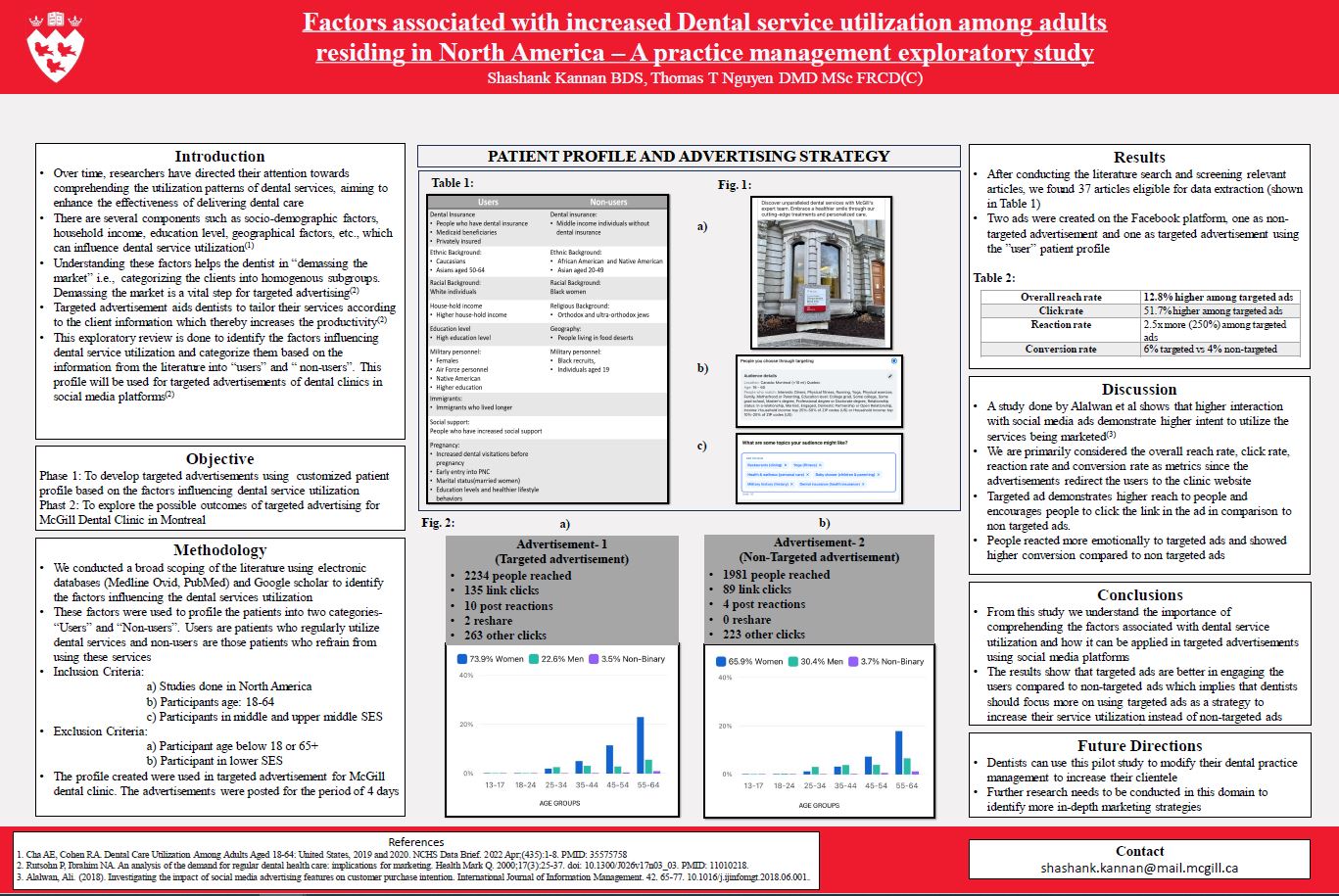Factors associated with increased Dental service utilization among Working adults residing in North America- An exploratory review
Name of the author: Shashank. K
Name of the supervisor: Dr. Thomas. T. Nguyen
Course: Master’s in dental sciences- NT (Year-II)
Background: Understanding how people utilize dental services can be challenging as it varies with different contexts. It's crucial to pinpoint motivational factors associated with dental service utilization for effective targeting of specific groups. Dental practitioners stand to benefit by comprehending these factors, potentially leading to increased dental visits. Surprisingly, there is a gap in the literature exploring factors to improve dental practice management. This review aims to address this gap, providing insights for North American dental practitioners struggling with the needs assessment of this target population. By adapting their practice management strategies based on identified factors, practitioners can enhance their ability to meet the unique dental care needs of middle-income working-age adults, ultimately improving oral health outcomes.
Objective: To identify the motivational factors associated with dental service utilization among working-class adults with middle-income socio-economic status (aged 18-65 years) residing in North America.
Methodology: A brief literature search will be conducted using two electronic databases (Medline Ovid, Google scholar and PubMed) based on the inclusion and exclusion criteria. Relevant grey
literature will also be included. Title and full text screening will be done by a single reviewer.
Results: Yet to be done
Conclusion: This review aims to assist dental practitioners in understanding the significant factors linked to increased dental service utilization. By comprehending these factors, practitioners can
modify their practice management effectively to enhance the delivery of their services.
Keywords: Dental service utilization, Working adults, North America.
